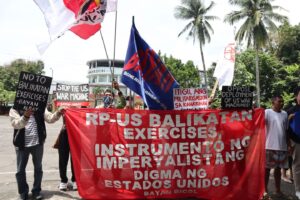Dangerous nuclear agreement for "civilian use" between the US and the Philippines enters into force


The nuclear agreement for alleged civilian use between the US and the Philippines or the so-called 123 Agreement took effect on July 2. The agreement was signed when US vice-president Kamala Harris visited the country in November 2022.
By virtue of this agreement, 40 American companies can now enter the Philippines to build small modular reactors (SMR) to generate electricity. There is not a single such commercial plant operating today in the entire world, not even in the US itself, thus contruction in the Philippines will be an experiment.
In the US, some electric cooperatives have rejected SMRs because they are too expensive to construct. The electricity it will generate is also very expensive so the SMR is not cost effective in any country. Currently, it costs $5.3 billion to $9.3 billion to build 8-12 SMRs that can produce 462 megawatts of electricity.
Like large nuclear plants, these small plants pose a significant risk to the environment and public health. In fact, the volume of nuclear waste emitted by SMRs is greater, according to a 2022 Stanford University study.










